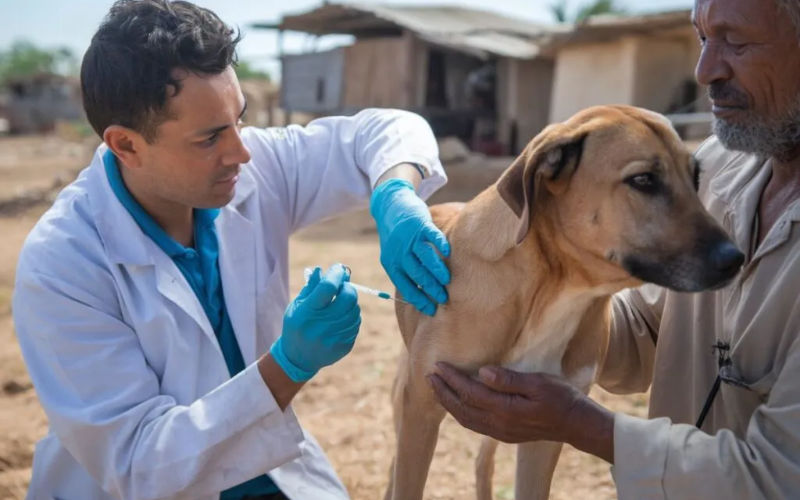Morocco’s Stray Dog Sterilization Plan Hits Snag as Vets Refuse to Participate

While it is pulling out all the stops to fight against the proliferation of stray dogs after accusations that Morocco was considering killing three million stray dogs before the 2030 World Cup, the Moroccan government is facing a major obstacle: veterinarians are not willing to "perform sterilizations".
"There is no campaign to eradicate stray dogs," Mohamed Roudani, head of the hygiene and green spaces division at the Moroccan Ministry of Interior, assured MAP in February. This statement came after the famous primatologist and animal rights activist, Jane Goodall, alerted FIFA about the impending massacre of 3 million stray dogs ahead of the 2030 World Cup. "Our country has been committed since 2019 to applying the method that consists of capturing stray dogs, sterilizing them to prevent their reproduction, vaccinating them against rabies, deworming them, identifying them with ear tags and releasing them," explains the same official to RFI. "This is now the only solution to manage the problem of stray dogs and avoid nuisances."
In Roudani’s view, culling stray dogs cannot be the best alternative. "If we brutally empty a territory of its dogs, very quickly and in the following days, other dogs will arrive to take over their territory," he further explains. Concerned about the situation, the Moroccan government has already invested nearly 80 million dirhams (about 7.7 million euros). "Over the past five years, a total amount of 80 million dirhams has been mobilized for the acquisition of vehicles and equipment dedicated to the collection, monitoring, and management of stray animals," revealed the Minister of Interior, Abdelouafi Laftit, who was responding in early May to a written question addressed by the deputy of the Haraki Group.
The government also signed in 2019 a framework partnership and cooperation agreement bringing together several key actors, including the Ministry of Interior through the General Directorate of Territorial Communities, the Ministry of Health and Social Protection, the National Office for Food Safety (ONSSA), as well as the National Veterinary Authority. Another flagship action: the development of a draft decree relating to Law No. 56.12, aimed at protection against canine dangers that incorporates an animal-friendly approach.
The Moroccan government intends to continue its efforts. However, it faces a major obstacle. "The big concern is that veterinarians are not interested in performing sterilizations," laments Salima Kadaoui, president of the Tangier Wildlife Sanctuary association. "If we could change the law and allow international organizations to come and perform mass sterilizations, we could really fight and reduce canine and feline populations very, very quickly."
Related Articles
-

Moroccan Cities Clash: Wedding Halls Spark Noise Pollution Crisis and Human Rights Debate
4 September 2025
-

Rif Protest Leader Zefzafi Breaks Silence: Patriotic Speech at Father’s Funeral Stirs Al Hoceima
4 September 2025
-

Illegal Beach Sand Mining Near Tangier Sparks Environmental and Economic Outcry
4 September 2025
-

Surveillance Footage Exposes Tourist Robbery Ring in Tangier Court Drama
4 September 2025
-

Rif Protest Icon’s Father Dies: Ahmed Zefzafi’s Passing Reignites Hirak Movement Debate
3 September 2025